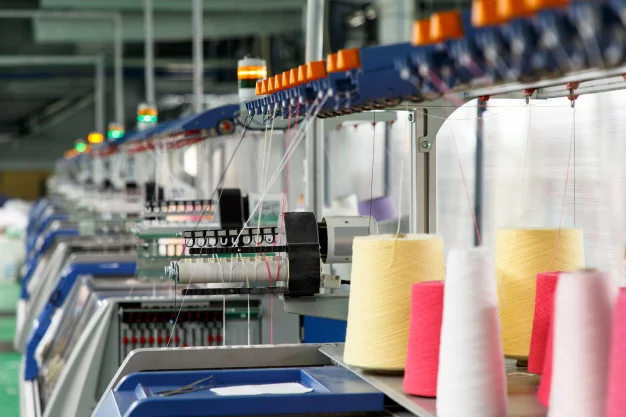‘Industry 4.0’ Developments in the Textile Sector
The textile industry is striving to create its own industry 4.0, with the development and change of technology and trends. More efficient cotton production, better yarn production facility, faster weaving looms, energy-saving dyeing facilities that use less water, and faster apparel production. In the light of all these goals, the textile industry is trying to adapt to technology with increasing environmental awareness. Innovative approaches in textile consumption are accepted too late compared to technology products. The percentage of environmentally friendly products that make life easier, healthy and increase comfort in the market is still very low. For this reason, we can see more technological innovations in the processes rather than the final product in the textile sector.
Extravagant, non-functional products have no chance of becoming popular. Products that seem too innovative will not attract the attention of the consumer. Textile and ready-made clothing move according to fashion trends. Fashion sometimes looks very futuristic, sometimes it goes back centuries. Functionality and design will always come to the fore in ready-to-wear and home textiles. However, textiles that find a place for themselves in more industrial use areas, such as technical textiles, have a high chance of finding a permanent place for themselves.
USE OF ARTIFICIAL INTELLIGENCE IN TEXTILE INDUSTRY
In a sustainable circular economy, it is possible to bring more environmentally friendly and more economical solutions with less resource use. We see artificial intelligence technology more in the product development and production stages, especially with the preparation of the accessories used in ready-made clothing with 3D printers, and the big brands and store chains now deciding their collection choices with 3D illustrations. Now, design firms switch to real sample production if they decide after their realistic holographic or VR supported presentations of their products to their customers. In fact, we see that many famous brand store chains use visuals they have created with 3D software as well as real physical shots in their online stores.
In the future, the use of textiles will be longer in different forms, just as it has been in history and is still seen in some underdeveloped countries. In other words, you can continue to use a sheet as a t-shirt one day, then a sock and finally a shoe sole as a result of recycling. Starting from the cotton field, all of the final product used by the consumer will be recycled in different forms in the circular economy. We are experiencing this today, but in the near future, it will become globally planned and programmed, and we hope that one day it will become country politics.
SENSITIVITY IN THE INDUSTRY AND ENVIRONMENTAL POLLUTION
Climate change and ocean pollution have become a priority for sensitive communities. In this regard, first of all, it will force the production methods and products that use a lot of natural resources in their production and have a negative impact on the environment. In this sense, textile production creates less pollution than many industrial production and waste. With the awareness that has developed in the industry in recent years, production in accordance with sustainable environmental policies is increasing rapidly. The most important problem in textile production is the difficulties in the collection and recycling of synthetic materials, the need for water in cotton production, the energy need in the production process and the dirty waste created by this production process. Each stage should be studied separately and processes should be improved and developed. It is very important for increasing consumer awareness and ensuring a sustainable textile production. After all, sustainable economy also has a cost, and everyone must contribute to meet this cost.
BEHAVIORS IN TEXTILE AND FASHION
Textile and fashion are shaped according to both local and global trends. Thanks to global communication, a current that develops in one end of the world can almost immediately show its effect in another part of the world. Behaviors can quickly show their effects in design. With a share of a social media phenomenon, the world can react in an instant. With the whole of this incredibly fast web, fashion and trends are taking shape and can be wearable in a very short time. The acceleration of decisions and production allows us to see the designs created by this mega network in a very short time on online sales and store windows.
fabric control in textile factory
Textile engineering technology, 19th century. It has been developing continuously since the industrial revolution that took place in Turkey. Technology manufacturers prepare and present important technological innovations at the ITMA fair, which takes place every 4 years. In textile technology, the development that it basically triggers in competition is more on speed and efficiency. We have seen the most concrete example of this in recent years, during the transition from conventional rotation and panel printing method to digital printing at great speed. Thanks to digital printing, stencil-free is much faster and almost unlimited color
It has become possible to produce a much smaller amount with the possibilities of production. This technological development has given a serious impetus to the ready-made clothing industry, which needs rapid change. Digital printing technology still has a long way to go. Likewise, we can say that new technologies offered in many fields such as paint and apparel are expensive, and there are important ways ahead. However, with the use of these new technologies in the industry, optimizing the technology is accelerating. Thanks to these exciting developments, diversity increases and less damage to the environment occurs.
Author: Isa DAL, CEO of Evteks

